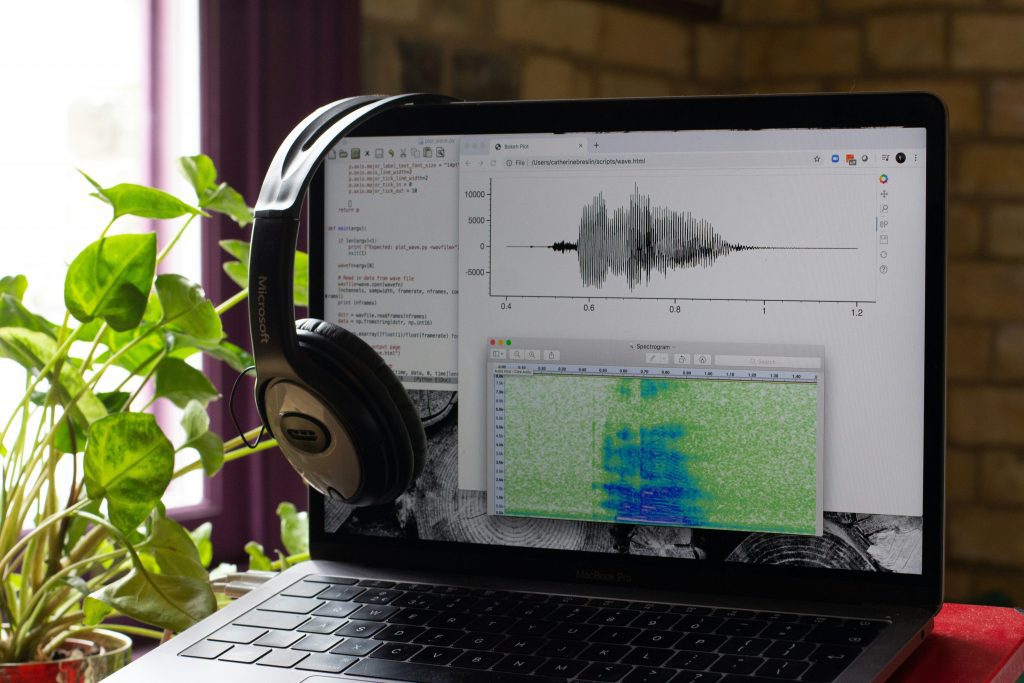Unlocking The Potential Of Voice Technologies
5 Mins Read
Published on: 05 July 2024
Last Updated on: 14 October 2024

toc impalement
You must have heard about speech recognition software and voice assistants. Well, these are some of the basics when it comes to the entire umbrella of voice technologies. These are computer systems that can understand and react to spoken orders from people.
Google Assistant, Apple’s Siri, and Amazon’s Alexa are a few examples. We all know about them and use them on a daily basis.
These technologies use artificial intelligence to understand spoken language, recognize words, and perform various functions.
Some of these tasks I am referring to are playing music, answering queries, and managing smart home appliances.
But how are they really making an impact? If you want to find out, you have reached the right place. Therefore, read this blog until the end…
How are Voice Technologies Changing the World

Thanks to voice technologies, our lives are more convenient and accessible. These technologies make it simple to communicate with devices hands-free. To be honest, with the sound of your voice, they can assist you with daily duties, much like a personal assistant!
Voice AI represents the future of human-computer interaction. They have the potential to transform the way we engage with technology and each other.
Furthermore, by understanding and harnessing the power of voice-based artificial intelligence, we can create a more accessible, efficient, and connected digital world.
This article will help you understand basic ideas and concepts around voice technologies and their potential impact.
The Role of Voice Accent Changer Software
Firstly, Voice accent changer software is at the heart of AI accent smoothing technologies. These systems can modify the tone and cadence of human speech.
Furthermore, this technology has advanced significantly in recent years, making it faster, more accurate, and more versatile.
Enhancing Accessibility
Secondly, one of voice technology’s biggest advantages is its potential to improve accessibility. Voice AI has the potential to be a game-changer for people with disabilities.
In addition, voice commands allow individuals with vision impairments to use their gadgets, and those with mobility problems can use their voice to control their surroundings.
People are empowered by technology, which increases their independence and enhances their quality of life. Moreover, voice AI can assist in overcoming linguistic obstacles.
Voice technologies, with their ability to translate in real-time, can help individuals who speak different languages communicate with one another, encouraging inclusivity and understanding in a world growing more interconnected by the day.
Increasing Efficiency
Thirdly, voice technologies can also boost efficiency in various sectors. In the workplace, voice AI can streamline tasks and improve productivity.
For example, voice-activated assistants can manage schedules, set reminders, and even draft emails, allowing employees to focus on more critical tasks.
In healthcare, voice technologies can assist doctors by transcribing patient notes or retrieving patient information hands-free, thereby saving time and reducing errors.
Besides these, in homes, smart devices equipped with voice AI can control lighting, temperature, and security systems, making everyday life more convenient.
Therefore, managing these tasks through simple voice commands can save time and reduce individuals’ cognitive load.
Fostering Connectivity
Fourthly, Voice AI fosters better connectivity by making technology more intuitive and user-friendly.
Moreover, people of all ages can interact with devices without learning complex interfaces. This simplicity encourages broader adoption of technology, bridging the digital divide.
For instance, elderly individuals who might struggle with traditional keyboards and touchscreens can easily use voice commands to stay connected with family and friends.
Furthermore, voice AI can enhance customer experiences. Companies increasingly use voice bots to handle customer inquiries, providing quick and efficient service.
These bots can understand and respond to natural language, making interactions more human-like and satisfying for customers.
Challenges and Considerations
While the potential of voice technologies is immense, there are challenges to consider. Privacy concerns are at the forefront, as voice AI systems often require access to personal data to function effectively.
Ensuring that this data is securely stored and handled is crucial to maintaining user trust.
Another challenge is ensuring that voice recognition systems can accurately understand diverse accents and dialects.
Inclusivity in voice AI means developing systems that can cater to a wide range of voices, ensuring that everyone can benefit from these technologies.
Future Prospects
The future of voice technologies looks promising, with continuous advancements expected in the coming years.
Researchers are improving voice AI’s accuracy and capabilities, making it even more integrated into our daily lives.
From enhancing virtual reality experiences with voice commands to developing sophisticated AI that can understand context and emotions, the possibilities are vast.
Quotes from industry experts highlight this optimism:
- “Voice AI is not just a tool; it’s a new way of interacting with technology that has the potential to transform every aspect of our lives.” – Tech Innovator
- “As voice technologies evolve, they will become more attuned to human nuances, making interactions with AI more seamless and intuitive.” – AI Researcher.
How Does Voice Technology Work?
In order to understand and react to commands, voice technology combines artificial intelligence (AI) with natural language processing (NLP).
Your voice is translated into digital signals and delivered to the voice assistant’s processor when you talk to it.
After that, the CPU decodes the audio signals to determine which words and sounds you actually said.
Speech recognition, an essential first step in comprehending what you’re attempting to say, is used to accomplish this.
The gadget then uses natural language processing (NLP) to deduce the context and intent of your statements. This is the point at which the gadget attempts to understand your requests or questions.
After processing the data, the AI system decides on the best course of action. This could entail responding, carrying out an action, or managing a smart device.
Finally, the gadget answers by voice to complete the task or manage the smart device. This entire process proceeds quickly—many times in just a few seconds.
Machine learning algorithms are used by voice technology to enhance its comprehension and accuracy over time, making it more effective and efficient.
Through the use of these cutting-edge technologies, voice assistants can offer practical and beneficial interactions that improve our quality of life.
Conclusion
Voice technologies are key to a more accessible, efficient, and connected world. By embracing voice AI, we can unlock new levels of convenience and inclusivity, making technology work better for everyone.
While challenges remain, the ongoing advancements in voice speech recognition software and AI promise a future where our interactions with technology are as natural as conversing with a friend.
Read More…
The Logistics of Delivering Technology
10 Small Business Ideas for Tech Companies
3 Small Business Ideas Which Are Compatible with Current Technology


















Comments Are Closed For This Article